last modified: Tuesday, 22-May-2018 23:34:01 CEST
Document status: complete
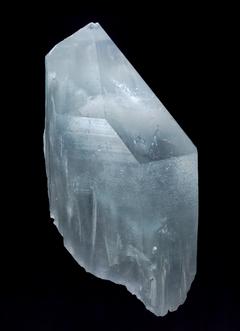
10mm 720x992 59kb - 1440x1984 179kb
|
- quartz crystals that appear blue due to the so called Tyndall scattering effect caused by tiny inclusions
- crystalline quartz that is blue due to more or less evenly distributed inclusions of blue minerals, like magnesio-riebeckite or tourmaline
- a coarse grained, massive, macrocrystalline form of blue quartz not unlike aventurine quartz that is also colored by embedded blue minerals, like dumortierite.
So far no quartz that is blue because of color centers, similar to those found in amethyst or smoky quartz, has been found in nature. Amethyst from certain mines in Brazil will partially or completely turn blue on special treatment.
Some would say that the term "blue quartz" is reserved for rock crystal that appears blue by Tyndall scattering. This, however, is the rarest form of blue quartz, and there is also a common denominator between all three forms: the color is caused by inclusions of other minerals, and not by built-in trace elements and/or lattice defects, like in amethyst, for example.
Because of this rather open definition, the specimen in the two images to the right both qualify as blue quartz.
The first image shows a rock crystal that is colored by tiny fibers, probably riebeckite from Minas Gerais, Brazil. In the "Locations and Specimen" section you will find another image of this crystal.
The second image shows another type, a massive macrocrystalline quartzite specimen of unknown origin, colored blue by some unknown embedded mineral, possibly dumortierite.
Specific Properties
The color can vary from gray to deep blue. Natural blue quartz is always colored by inclusions of other minerals, not by trace elements or color centers, so it is never transparent, just translucent.Occurrence
This depends on the type of inclusion: Quartz that includes riebeckite occurs in metamorphic rocks, while inclusions of blue turmaline have been found in crystals from igneous rocks and pegmatites.Grains of blue quartz are occasionally found as a constituent of igneous rocks.
Locations and Specimen
Brazil
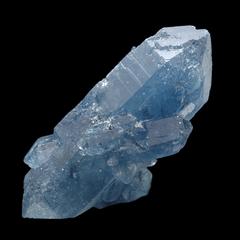
10mm 1000x1000 103kb - 2000x2000 301kb |
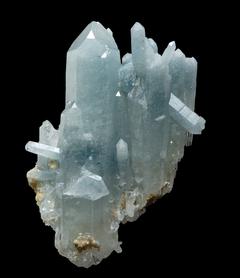
10mm 864x1000 86kb - 1728x2000 249kb |

10mm 992x1024 100kb - 1984x2048 288kb |
Spain
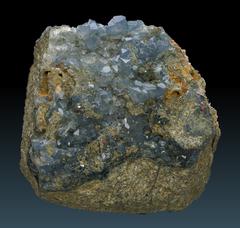
10mm 1648x1568 522kb |
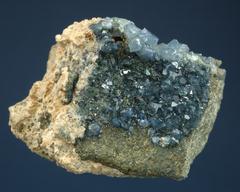
10mm 1200x960 233kb - 2400x1920 643kb |
A locality with very similar looking crystals is Olvera near Cádiz, Andalusia. However, the crystals at that locality are colored by inclusions of the mineral aerinite (Romero Silva, 1997). Specimen with inclusions of both aerinite and magnesio-riebeckite have been observed, as well (Hyrsl & Niedermayr, 2003)
The two images show views of the same specimen from Olvera. One side has light blue, but larger crystals. The dark shiny crystals in the appeared when I dissolved a cover of carbonate cement.
Another nice image of this type of blue quartz can be found at the blue quartz description at mindat.org.
Further Information, Literature, Links
 Printer Friendly Version
Printer Friendly VersionCopyright © 2005-2016, A.C. A k h a v a n
Impressum - Source: http://www.quartzpage.de/blue.html

